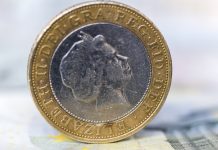The euro finished the previous week 0.3% higher versus the US dollar. The euro US dollar exchange rate closed Friday at US$1.0978. The pair is edging lower in early trade on Monday.
The euro performed well across the previous week as investors’ concerns over the health of the eurozone economy eased slightly. Data early on, last week, showed that inflation remained well below the European Central Bank’s 2% target and that the German manufacturing sector slumped deeper into contraction. However, retail sales figures later in the week eased fears that the manufacturing slowdown was spilling over into the consumer sector. This kept the euro buoyant.
Euro investors have kicked off the new week digesting disappointing German factory data. German factory orders declined a further -0.6% month on month in August. This was below the -0.5% contraction that analysts had forecast. On an annual basis German factory orders have declined an eye-watering -6.7%
The economic prospects for Germany remain uncertain as the exporter nation stays caught up in the US — China trade dispute and amid slowing global demand. A disorderly Brexit could also increase risks for the German economy. With such an uncertain economic outlook for Europe’s largest economy, the ECB could be forced to cut interest rates again, as they did last month.
| Why do interest rate cuts drag on a currency’s value? |
| Interest rates are key to understanding exchange rate movements. Those who have large sums of money to invest want the highest return on their investments. Lower interest rate environments tend to offer lower yields. So, if the interest rate or at least the interest rate expectation of a country is relatively lower compared to another, then foreign investors look to pull their capital out and invest elsewhere. Large corporations and investors sell out of local currency to invest elsewhere. More local currency is available as the demand of that currency declines, dragging the value lower. |
Dollar Gains As Trade Deal Hopes Fade
A mixed bag of data across the previous week increased fears over the health of the US economy and pulled the dollar lower. The US manufacturing sector unexpectedly slipped deeper into contraction, the dominant service sector also saw growth slow considerably and the number of jobs created in the US in September was also lower than analysts had forecast at 136,000. Yet despite the weakness in the data Federal Reserve Jerome Powell sounded upbeat over the health of the US economy in a speech on Friday.
As the new week kicks off the dollar is gaining ground as US — China trade hopes fade. Reports suggest that negotiations between the two powers have hit a sticking point and China is no longer looking for a broad deal with Washington. Trade pessimism has investors looking towards the greenback for its safe haven properties.
With no high impacting US economic data due to be released trade developments will remain in focus today.
| What do these figures mean? |
| When measuring the value of a pair of currencies, one set equals 1 unit and the other shows the current equivalent. As the market moves, the amount will vary from minute to minute.
For example, it could be written: 1 EUR = 1.12829 USD Here, €1 is equivalent to approximately $1.13. This specifically measures the euro’s worth against the dollar. If the U.S. dollar amount increases in this pairing, it’s positive for the euro. Or, if you were looking at it the other way around: 1 USD = 0.88789 EUR In this example, $1 is equivalent to approximately €0.89. This measures the U.S. dollar’s worth versus the euro. If the euro number gets larger, it’s good news for the dollar. |





